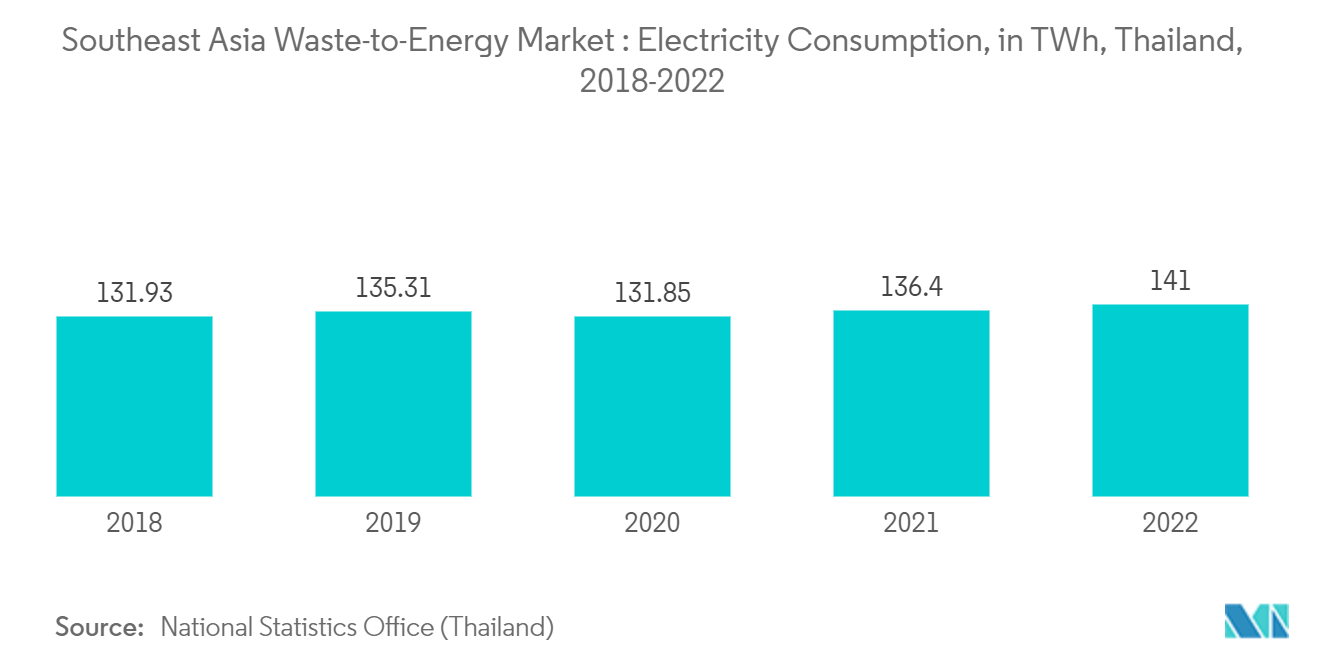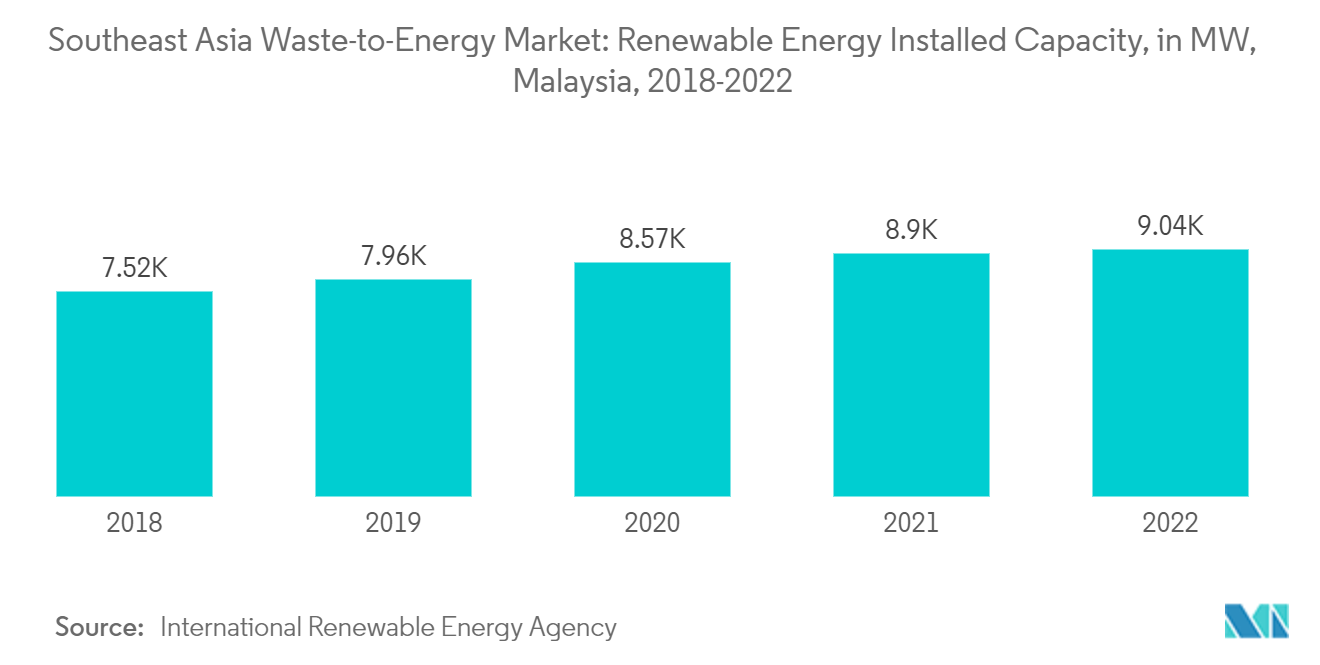Market Trends of Southeast Asia Waste-to-Energy Industry
Growing Demand for Thermal-Based Waste-to-Energy Conversion
- Thermal-based waste-to-energy conversion refers to utilizing thermal energy to convert waste materials into usable forms of energy, such as electricity, heat, or fuel. This approach involves the application of various technologies that use heat as a catalyst for converting waste into energy.
- Rapid population growth and urbanization led to a significant increase in waste generation, posing challenges for waste management. Thermal-based waste-to-energy conversion effectively manages and reduces the waste volume that must be landfilled or incinerated.
- In January 2023, Harvest Waste, a company based in the Netherlands (formerly Amsterdam Waste Environmental Consultancy and Technology), commenced initial studies for a thermal waste-to-energy venture in the Mekong Delta province of Soc Trang in Vietnam. The project is estimated to cost around USD 100 million.
- There is a growing need for reliable and sustainable energy sources. Thermal-based waste-to-energy technologies allow waste conversion into usable energy forms, such as electricity and heat. It contributes to energy generation and helps diversify the energy mix, reducing dependence on fossil fuels.
- Southeast Asia includes one of the fastest-growing urban populations globally. The rapid growth in the urban population led to explosive growth in the amount of waste generated by the urban population across the region. Most of this waste is organic (about or more than 50%) except in Singapore.
- With the growing population, the region's electricity demand increased significantly in recent years. For instance, in Thailand, electricity consumption increased by more than 3% between 2021 and 2022.
- Therefore, as per the above points, the demand for thermal-based waste-to-energy systems is expected to increase during the forecasted period.

Malaysia Expected to Witness Significant Growth
- The Malaysian government actively promoted sustainable waste management practices and renewable energy development. They implemented various initiatives and policies to support the waste-to-energy sector, including feed-in tariffs, tax incentives, and regulatory frameworks. These measures create a conducive environment for investment and growth in the industry.
- Like many other countries, Malaysia is experiencing a rise in waste generation due to population growth, urbanization, and industrialization. It creates a pressing need for efficient waste management solutions. Waste-to-energy projects offer a sustainable method to tackle the growing waste volume while generating renewable energy.
- In May 2023, the Melaka state government ordered the expedited construction of the Waste to Energy (WTE) plant or incinerator at the Sungai Udang Sanitary Solid Waste Disposal Site. They aim to include the facility operational next year, earlier than the original target of 2026.
- Furthermore, Malaysia includes a significant proportion of organic waste, which is well-suited for waste-to-energy conversion processes. Organic waste, such as food waste and agricultural residues, can be efficiently utilized for anaerobic digestion or composting, leading to biogas or fertilizer production. The abundance of organic waste resources presents favorable conditions for waste-to-energy projects.
- Additionally, the Malaysian government set renewable energy targets to increase the share of renewable energy in the country's energy mix. Waste-to-energy technologies contribute to fulfilling these targets by generating renewable energy from waste resources. It aligns with the country's sustainability goals and supports the transition to a low-carbon economy.
- According to International Renewable Energy Agency, the total renewable energy installed capacity in 2022 was 9044 MW registering a growth rate of more than 20% between 2018 and 2022.
- Therefore, according to the above points, Malaysia is expected to play a key role in the market studies during the forecasted period.


